Google’s algorithms seem to change daily, but their foundations remain constant.
You need to optimize your content around the queries people are searching for, and you need to build good links to that content to help it rank highly in the search results.
That comes down to SEO keyword research, which has always followed a standard formula:
- Use keyword research tools to search for queries related to your market or product
- Analyze the search volume to ensure the keywords you ultimately target stand to drive sufficient traffic to your site to justify your optimization efforts
- Filter your list according to relative measures of competition to avoid investing in keywords you’ll never actually be able to rank for
On the whole, following this formula is better than doing no keyword optimization at all.
But what if I told you that doing keyword research this way could be leaving your company at a major disadvantage?
Let me show you an example so you can see what I mean…
Imagine that you’re an ecommerce company selling athletic shoes. You want to rank for women’s running shoes specifically, so you head to the AdWords Keyword Planning tool.
You enter your top level keyword (“womens running shoes”) and get something like the following:
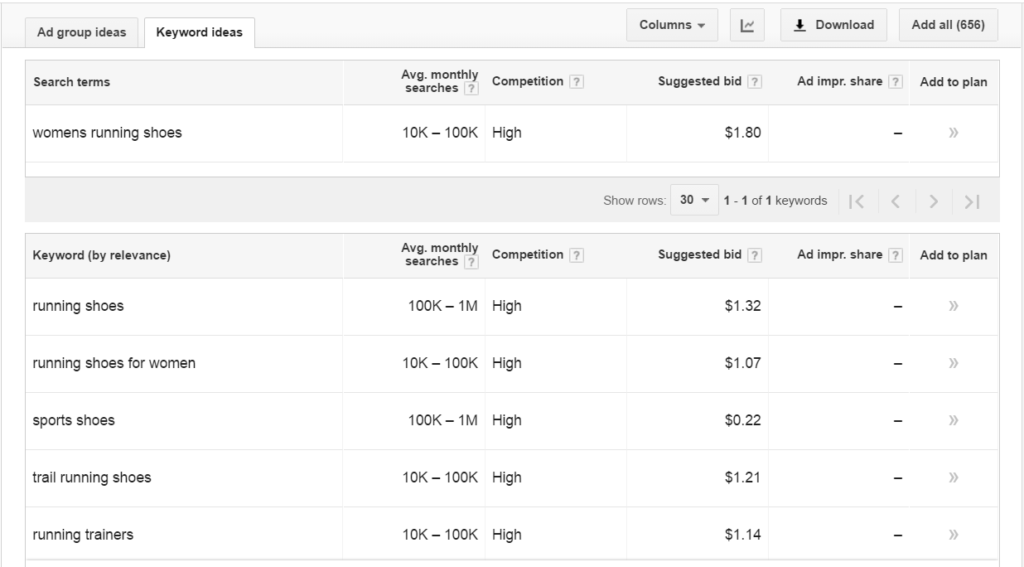
You scroll down the list of 700 keyword variations and see more of the same:
“Ladies running shoes”
“Womens running trainers”
“Running shoes online”
If you’re like most ecommerce brands getting started with basic SEO, you’d scroll down the list, choose those with acceptable levels of competition and suggested bids, and start building pages around them.
But if you did so, you’d be missing an important piece of the puzzle: buyer intent.
The Classic Buyer Decision-Making Process
To understand what relevance buyer intent has on the SEO keyword research process, we need to first review the classic buyer decision making process, as represented by the sales funnel.
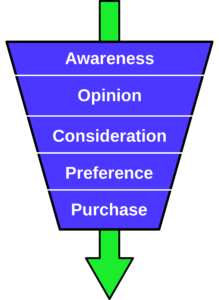
Before a potential customer can purchase from you, they need to become aware of a need that your business can solve.
Following with our running shoes example, imagine a woman has decided to take up jogging. Now she knows she needs running shoes; she’s aware of a need she hasn’t had before.
Next, she begins to research alternatives that are available to fulfill her need – represented in the funnel above by the “Opinion” tier.
Perhaps, in searching the internet, she learns that there are several different types of running shoes (everything from basic trainers to Vibram five-finger toe shoes), as well as several different places to buy them (including brick-and-mortar stores, Zappos-like merchants and online specialty shops).
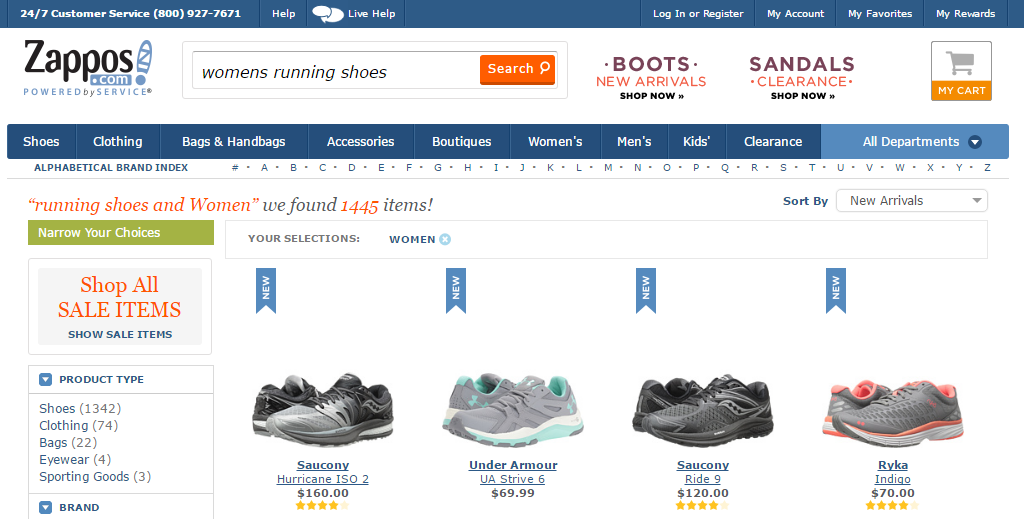
Eventually, she considers these options against each other in order to form a preference and make an ultimate purchase.
When she clicks the “Buy” button online, she’s completed the sales funnel, making use of several different resources along the way.
Now, back to keyword research…
The Problem with Traditional Keyword Research
With the idea of the classic sales funnel in mind, let’s look back at the list of “womens running shoe” keywords we generated earlier in the article.

Now, what do you see that could be a problem for the website in question?
If you answered, “all of the keywords here apply only to the top stage of the funnel,” you’d be right.
Thinking back to our fictitious buyer who’s just decided to take up running, it’s clear that these search queries are the kinds of things she’d type into Google when she’s just beginning the research process.
She is, at this point, what we call a “top of funnel” lead.
Because she’s at the “Awareness” stage of the buying process, she’s not ready to make a purchase.
In fact, if she’s searching for top-level keywords, she may not even be in the sales funnel at all.
As an example, suppose she’s a materials science student looking to see what fabrics and polymers are being used in today’s top shoes.
Her use of “womens running shoes” as a search query in this case may be research for a class project, not demonstration of intent to buy.
If the keywords you target on your website are all top-of-funnel, you’re missing an opportunity to reach prospective customers when they’re closer to that final step of buying.
Even worse, you could be wasting your effort optimizing your site around queries that risk having no buyer intent at all.
But back to our new runner. Imagine that you’re the buyer in this scenario…
You start by searching for “womens running shoes.” Through your research, you learn that you want a pair of shoes that’s lightweight, and that will work for both running and walking.
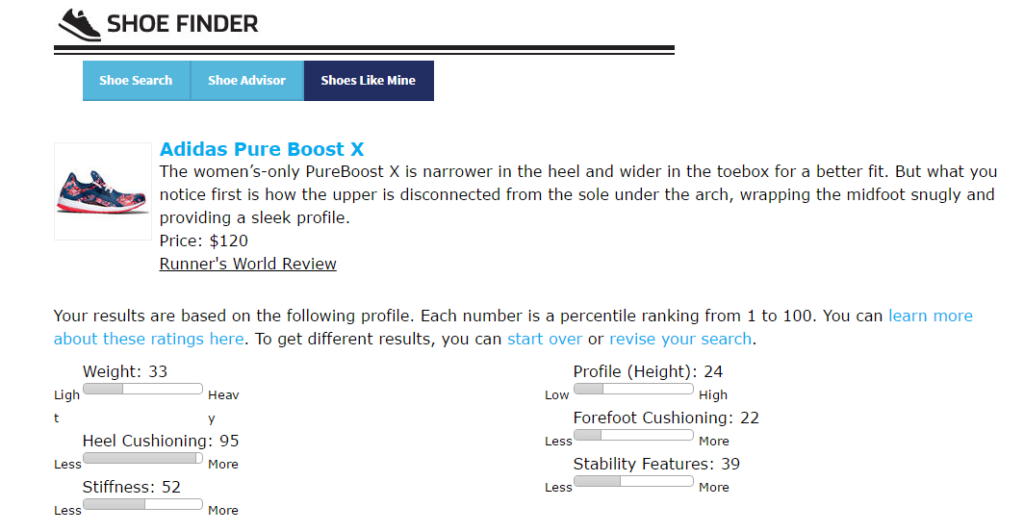
Now, your search behavior changes. Instead of searching for broad keyword phrases, you begin to narrow things down, searching for queries like “best lightweight womens running shoe” or “best womens shoe for running and walking.”
You’re now entering the “Opinion” stage of the funnel pictured above.
These searches take you to more targeted pages. You read about different shoes and different manufacturers. You begin to see people’s reviews, and from there, you narrow your list down to the Adidas Ultra Boost Uncaged shoe and the Adidas Pure Boost X shoe.
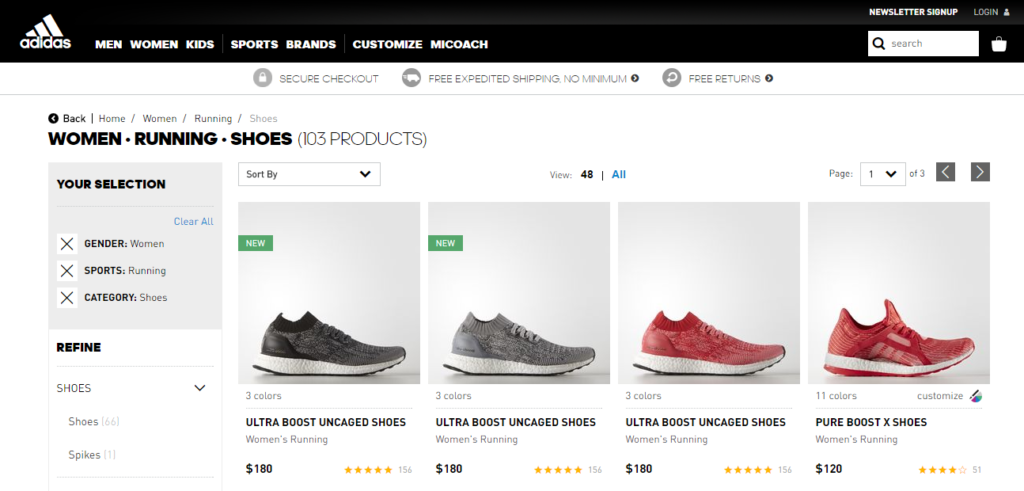
Here, you’re considering different alternatives and determining your own preferences. Your search terms change correspondingly. Now, your queries become even more specific, and include things like “Adidas ultra boost comparison” or “Adidas pure boost best price.”
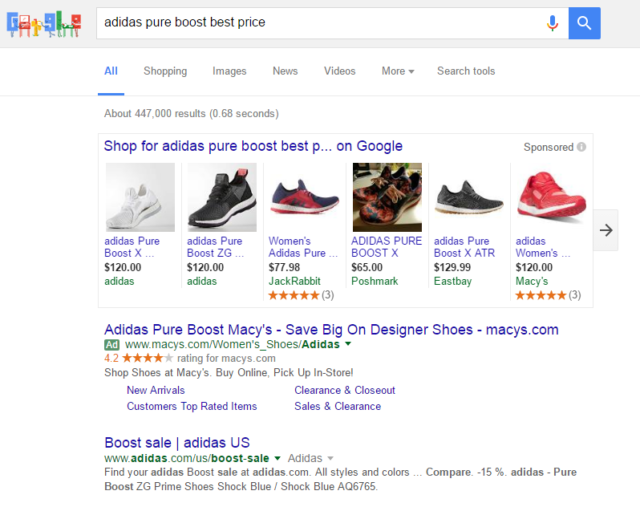
If you sell shoes and you only target broad keywords, you may not come up when our buyer is ready to click the “Buy” button.
Imagine, instead, that you’ve optimized your site for top-of-funnel, middle-of-funnel and bottom-of-funnel keywords.
Instead of only appearing in the search results when your buyers are doing their initial research, you’d be there every step of the way – from awareness of need to the final purchase decision.
Mapping Your Keywords to Buyer Intent
Targeting keywords that reach buyers at every stage of their research process is something all ecommerce brands need to do.
But where do you get started? How do you know which keywords buyers will use at each funnel stage?
Top-of-Funnel Keywords
Chances are, you already have a good grasp on how to brainstorm awareness-level keywords.
They’re the general terms you think about when you think about your business and your industry (they’re also often the toughest to rank for, which is yet another great reason to add middle- and bottom-of-funnel keywords to your target list).
Entering your primary keywords into the AdWords planner is a great place to start, as is simply searching Google and looking at the related searches that are displayed at the end of the first results page.
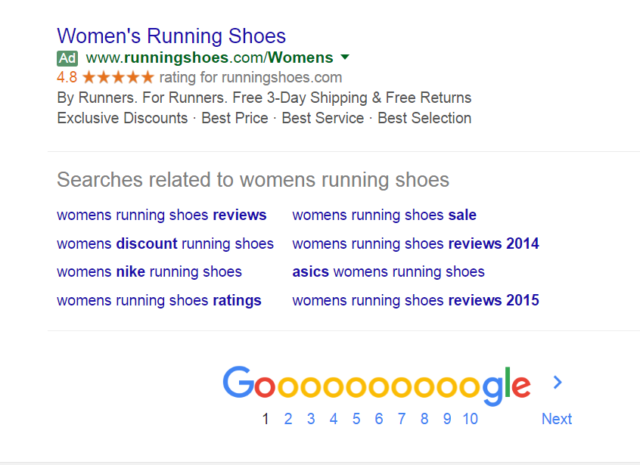
Middle-of-Funnel Keywords
Where this process starts to diverge from traditional, generic keyword research is in the more targeted approach needed to reach buyers in the middle stage of the sales funnel.
The easiest way to find these words is to append your general keywords with prefixes and suffixes like the following:
- “Best [target keyword]”
- “Easy [target keyword]”
- “[Target keyword] examples”
- “[Target keyword] causes”
- “[Target keyword] solutions”
- “[Target keyword] for audience”
- “[Target keyword] case study”
- “[Brand name] vs [brand name]”
- “[Brand name] alternative”
- “[Product name] review”
- “[Product name] comparison”
Certainly, these won’t all be relevant to your particular industry or business model, but they should give you a good jumping off point for the keywords that you’ll want to target at this funnel stage.
You can also target keywords built around the pain points your audience members are experiencing – even if these keywords don’t incorporate your main queries.
Following with our running shoes example, suppose our prospective customer knows that her feet pronate, or roll inward as she walks.
Knowing that, she may begin to modify her search queries at this stage to encompass things like “best womens running shoes for pronation” or “running shoes for flat feet.”
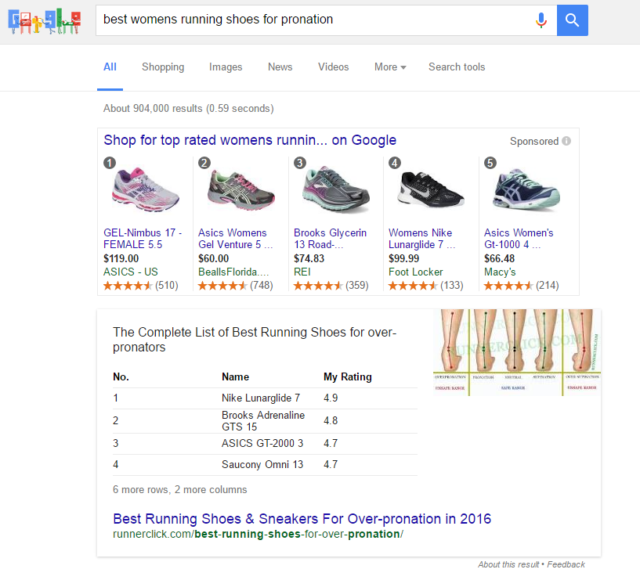
Targeting these keywords in particular can be quite lucrative – especially if your competition isn’t yet doing so or if you’re able to get your content featured within Google’s search results.
Consider also the opportunities that exist to build content around the questions website visitors are asking your company.
Look at questions that have been emailed in, as well as live chat transcripts or customer service phone records, if you make either option available.
Creating content that answers these questions not only significantly increases your middle-of-funnel keyword exposure, it predisposes prospects to consider your company in their evaluation of alternatives.
Bottom-of-Funnel Keywords
The third type of keyword you’ll want to include in your target list is the keyword that hits customers right when they’re ready to buy. Again, there are modifiers we can use to find these possible variations:
- “[Product name] best price”
- “[Product name] coupon code”
- “[Product name] discount”
- “[Product name] sale”
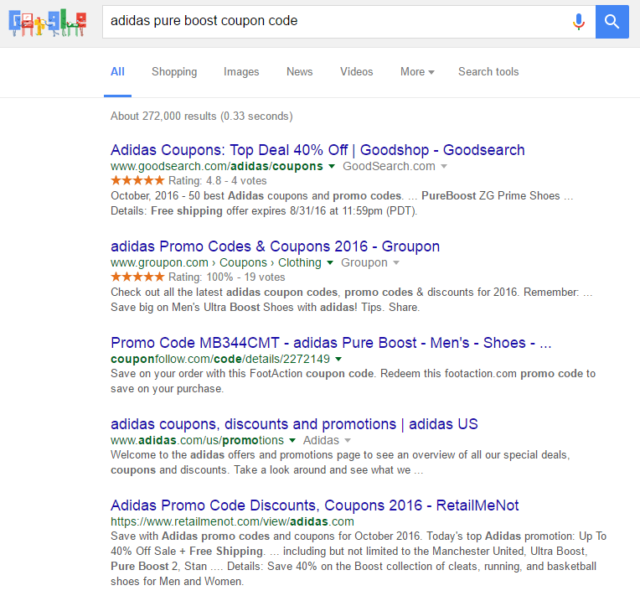
With all of these keywords – at every stage of the buyer funnel – you’ll need to evaluate the specific opportunities you choose based on your own limits for search volume and competition.
Keep in mind, though, that many middle- and bottom-of-funnel keywords will likely have significantly less search volume than top-of-funnel queries, though your ultimate conversion rates will likely be higher if you target the right opportunities.
With both middle- and bottom-of-funnel keywords, you’ll have some extra decision to make.
If you’re a product manufacturer, rather than a merchant who sells multiple brands, you’ll need to determine whether optimizing around your competitors’ keywords makes sense (regulations on running paid ads around these terms may influence your decisions as well).
Building Content around Buyer Intent Keywords
My advice, if you’re new to brainstorming keywords around buyer intent and funnel stages, is to not overthink it.
Keyword options truly are endless, and you could spend months evaluating different alternatives, rather than moving forward.
Instead, pick a handful of keywords at each stage that seem to suit your audience best, then optimize your website around them – either by adding new content to accommodate queries that weren’t previously addressed or to rework existing content to better support your new keywords.
Then, pay attention to your results. Are your search results rankings increasing? Is your website receiving more organic search traffic? Are the new middle- and bottom-of-funnel leads you’re receiving translating into more sales?
Use this data to determine your next moves, and continue to iterate as you uncover more and more opportunities.
By mapping your target keywords to buyer intent, you’ll best position your brand to connect with those customers who are nearly ready to buy.
Are you targeting keywords at multiple points in the sales funnel? If so, share any other tips and tricks you’ve picked up by leaving a comment below:
Image: Wikimedia Commons, Zappos, RunnersWorld



